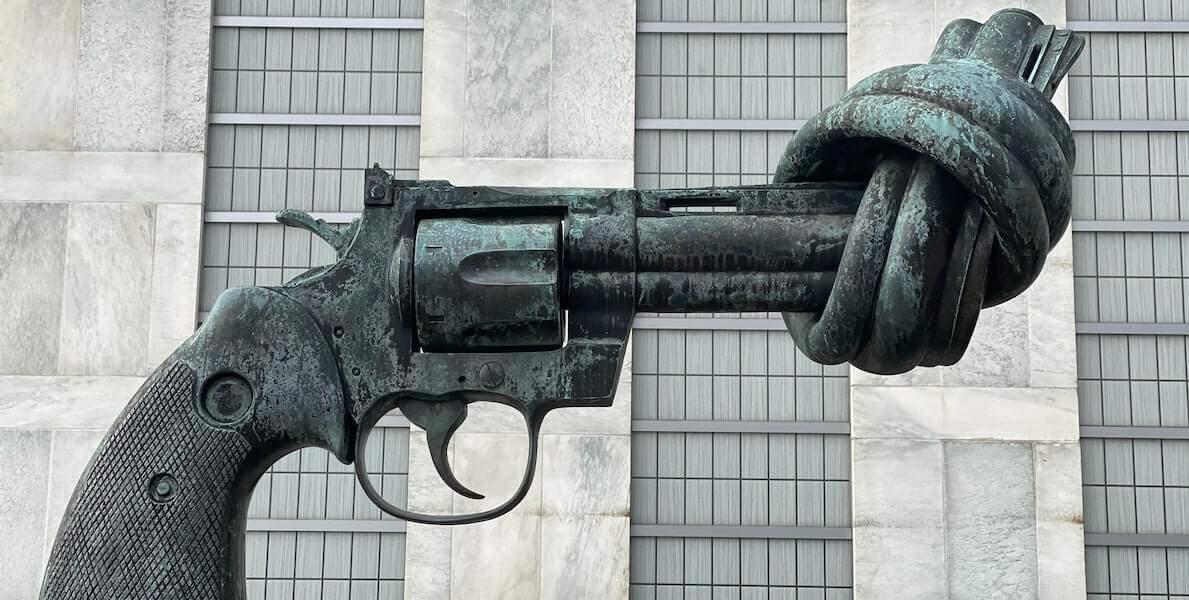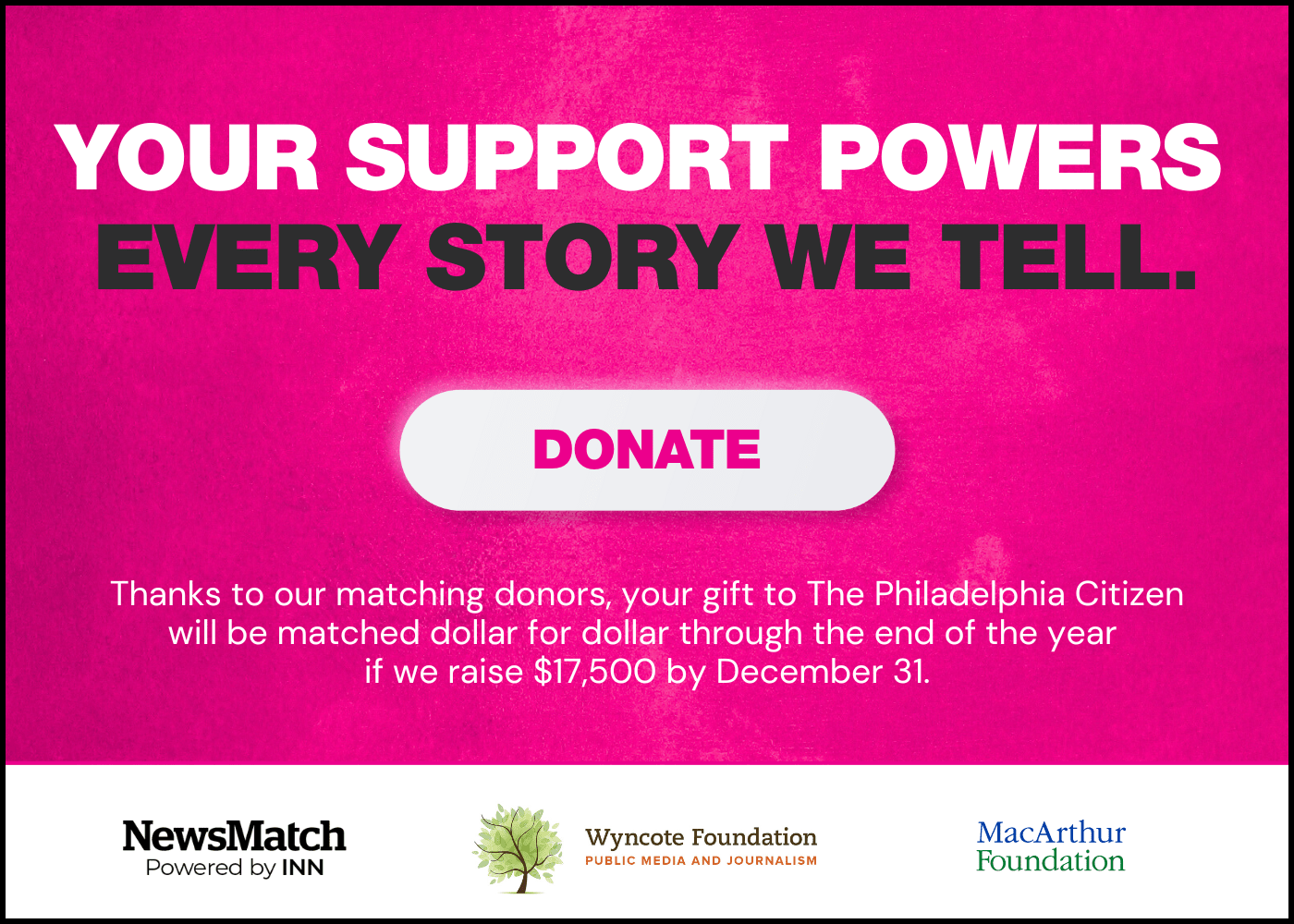There are few civic leaders in Philadelphia who, like Madonna, Oprah or, uh, Charo, have achieved one-name status. But when you hear “Pedro says …” it’s immediately clear that the speaker in question is Pedro Ramos, president and CEO of the Philadelphia Foundation.
In part, that’s because Pedro has been around, having served as the city solicitor and managing director, chief of staff to the president of the University of Pennsylvania, and chair of the now-defunct School Reform Commission. But it’s also because of demeanor: he’s a serious man with a guffaw that surprises, and he’s that rare insider who never seems ruffled and who doesn’t take cheap shots.
So it was that, at our Ideas We Should Steal Festival on the Comcast campus in 2019, Pedro nodded me over to him. The room had just listened to David Muhammad, executive director of the National Institute for Criminal Justice Reform, regale us on the intricacies of his stunning work in Oakland, California, where his CeaseFire gun violence intervention program had resulted in a historic seven-year low in that city’s murder and shooting rates.
“Can you introduce me?” Pedro asked me. “What would it take to bring him here?”
Mind you, this was late 2019 — when the murder rate was bad and getting worse, but not near the all-time highs we’d soon experience. But Pedro dove in, doing his research. At one point, he brought here Thomas Abt, author of Bleeding Out: The Devastating Consequences of Urban Violence — and a Bold New Plan for Peace in the Streets. During an eye-opening Union League breakfast, Abt walked a roomful of movers and shakers through a range of interventional innovations, like Muhammad’s, that were being employed elsewhere to make communities safer.
Long-term prevention v. immediate intervention
As the Philly body bags accumulated last year, Pedro received a call from Shawn McCaney, executive director of the William Penn Foundation, which has been funding much of the city’s community-oriented gun violence prevention programming. What was becoming clear to McCaney and so many of us was that, as a report by then-Controller Rebecca Rhynhart made clear, Philadelphia had been over-investing in long-term preventative strategies rather than immediate interventions.
The Civic Coalition to Save Lives has many challenges before it, but it’s already accomplished something many of us have been pining for: It’s an object lesson in how change can happen in cities.
It’s a point Muhammad made at in 2019, positing that most cities that seek to confront gun violence throw boatloads of dollars at all sorts of problems, instead of honing in on the proven techniques that can stop the violence in the short term:
The problem is many, many things fall under the broad category of violence prevention. I’ve heard everything from planting trees to universal pre-K to lead paint abatement. All of those have some research that says they result in gun violence prevention in 10, 15, 20, or 25 years …
… 100 percent of the cities I work with do not get this at first: Your actions must be aligned with your desired outcomes. But I tell you what I get: City Council member X says we’ve got to reduce homicides in the next year, so we’re going to launch a mentoring program for middle school students. A mentoring program for middle school students is great. We need it. It will never get you gun violence reduction in 12 months.
“What should we do?” McCaney asked Pedro last year, acknowledging the crisis. His board was skittish. “We had no background in criminal justice and fighting gun violence,” McCaney told me recently. “But this had become an issue that was too big to ignore.”
He and Pedro soon shaped into being a coalition of civic leaders that has turned out to be one of the biggest and most diverse in local memory, consisting of some 70 members, ranging from the Chamber of Commerce under the leadership of Sue Jacobson; to the Philadelphia Equity Alliance, co-chaired by businessman Michael Forman and labor leader Ryan Boyer; to Sharmain Matlock-Turner’s Urban Affairs Coalition. A working group of those members and Comcast’s Bret Perkins dove in and devoted the time to becoming mini-experts in the field of gun violence intervention, with a focus on immediate results.
Today they’ve announced an executive director to execute this plan, Estelle Richman, a longtime Philadelphia fixture who previously served as the City’s managing director, public health commissioner and director of social services. She also served seven years as director of the Pennsylvania Department of Public Welfare.
A deliberate strategy that works
They’ve been quietly at work for over the past year before recently announcing their existence. From the start, two precepts informed their strategy:
The first was that there is hope. There was real data showing that gun violence could be reduced, as evidenced by Oakland’s pre-pandemic six-year, 46 percent reduction in homicide and Indianapolis’ 17 percent drop over the last year. “Evidence shows a 10 percent reduction year over year in Philadelphia is achievable,” Pedro says.
The second is that government can’t turn this epidemic around by itself. A robust civic response in a very siloed town was called for. Reputational risk was going to be part of the capital civic leaders would have to bring to the problem-solving table.
The Coalition hired Muhammad to do a comprehensive study of the current state of things in Philadelphia. The results, unsurprisingly, revealed that a lot of work needs to be done. As in Oakland, Muhammad found that, for all our handwringing about who’s doing the shooting, men 45 years and older are more involved than those 18 and younger. Philadelphia’s average gun-shooting suspect is close to 30 years old.
As The Citizen’s Roxanne Patel Shepelavy chronicled in this story about CeaseFire’s painstakingly systemic work in Oakland, once Muhammad identifies those involved in the violence, credible messengers on the street establish rapport with those who would otherwise be involved in anti-social behavior. They offer interventions — help with housing, say, or jobs — to keep those at risk of violence on the straight and narrow. All the while, the threat of prosecution looms. “The carrots can’t be voluntary,” says McCaney.
You can imagine how delicate this work is on a practical level. CeaseFire case workers go back two to three years, unearthing data from each shooter and victim’s past that can help assess future risk and behavior. They interview arresting and probation officers, determine whether a shooter is in a gang or a clique or was part of a social media escalation. They comb court transcripts for data, all to, in a tragically accurate way, identify who is in most need of intervention.
It calls for a type of excruciatingly systemic cooperation between political leaders, police, DAs, and the courts. After all, the long hours a CeaseFire case worker puts into building trust with a corner fixture with a long rap sheet will be wasted if the cops bust down the suspect’s door in the meantime. In his deep dive into Philadelphia, Muhammad found this type of coordinated approach sorely lacking in Philadelphia, where the mayor and DA don’t even speak, and the police commissioner has blamed the DA for “revolving door” prosecution. (Our 5th annual Ideas We Should Steal Festival on December 15 will feature a case study in how the city of Chester has made inroads against gun violence by just such inter-agency cooperation.)
For all our handwringing about who’s doing the shooting, men 45 years and older are more involved than those 18 and younger. Philadelphia’s average gun-shooting suspect is close to 30 years old.
That’s why the Coalition’s big idea, with Muhammad as an advisor, is to stand up a Gun Violence Intervention Coordination Center — a centralized, data-informed entity to coordinate all of these complicated interventions. The Coalition is raising funds now for what is likely to require tens of millions of dollars over the next three years. And it has smartly engaged consultant Ernst & Young to help drive the Center’s design and implementation. Recognizing the need for project management expertise from outside government is critical; there are some things governments do well, but reimagining longstanding, unquestioned systems ain’t one of them.
The first intervention? Working together
The Coalition met with the mayor and, to his credit, he pledged his support. I’m told that Matlock-Turner (who, come to think of it, is also approaching one-name status: Sharmain!) was crucial in the meeting with the mayor and his team, positing again and again that this is about partnering to save lives — full stop.
Of course, there’s a difference between mere compliance and enthusiastic buy-in.
Those of us who have long chronicled the administration’s failures in combating gun violence have experienced firsthand a knee-jerk defensiveness from City Hall instead of an openness to new ideas. So, yes, it’s a good sign that Kenney signed on to the Coalition’s work, which they’re specifically designing to be something that lives on, administration to administration. But you also would have wanted a mayor with a historic $6 billion budget and a surprise $500 million surplus to jump up and say, “This is great — the City will match your investment!”
That said, let’s not lose sight of what’s truly revolutionary here. In a town where business and civic leaders have long kept their heads down, essentially outsourcing public problem-solving to a sclerotic political class, here is a group of business, nonprofit and civic leaders stepping up. They’re not just complaining or writing checks. They’re seeking out experts, getting educated, doing the work.
We all celebrated when many of the same players came together to pitch Amazon on headquartering here. In 2008, the same leadership class raised $68 million in a frenzy to keep the Art Museum from selling Thomas Eakins’ Gross Clinic painting. More recently, Comcast, the School District and the project management consultant Accenture partnered during the depths of the pandemic to raise the percentage of households with broadband connection from 70 to 84 percent.
The point is this: Those who call the shots in Philadelphia have demonstrated an ability to work together on discrete one-off projects, particularly when fueled by political will. Sadly, marshaling together the same type of energy for broad systemic solutions when it comes to challenges like public safety has been a tougher sell.
That’s what’s different this time. You’ve heard me quote our founding chairman Jeremy Nowak ad nauseam: That cities aren’t governments, they’re networks, and they require teamwork from public and private actors in order to advance the common good. That’s what we’ve seen in Pittsburgh, where the Allegheny Conference has penned a 10-year plan for its region, and it’s what we’ve seen from Chicago’s Civic Consulting Alliance, where the private sector’s best and brightest get loaned to government to help cut red tape and implement programs that can lift everyday citizens up.
The Civic Coalition to Save Lives has many challenges before it, but it’s already accomplished something many of us have been pining for: It’s an object lesson in how change can happen in cities. Remember that college textbook, Of The First Principles of Government? Philosopher David Hume held that power is actually in the hands of the governed. Change doesn’t come from government, it comes through petitioning government.
Well, for over a year, a group of super-engaged citizens have come up with a plan to do what government has been unable to, and has gotten their government to at least sign on in support. It’s a promising start for a bold plan, and we owe them our gratitude.
![]() MORE ON TACKLING GUN VIOLENCE FROM THE CITIZEN
MORE ON TACKLING GUN VIOLENCE FROM THE CITIZEN






